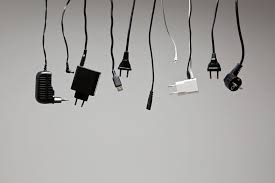Surge protectors safeguard electronics by absorbing excess voltage, reducing damage risk by 85%, and preventing electrical overloads and fires.
Shielding Against Voltage Spikes
We need to use surge protectors so that when there's a spike in voltage — like from lightning or, hopefully not, a power surge — it doesn't fry your appliances. A voltage surge is a significant increase of voltage above the designated level in the flow of electricity. These spikes are often hundreds, sometimes even thousands of volts high and can cause damage or complete frying to electronic devices that are connected to the same power source.
To overcome this issue, surge protectors contain elements like metal oxide varistors (MOVs). Power Absorption and Redirection:An MOV has the capacity to absorb and redirect overvoltage. When an external factor causes a voltage exceeding the normal household voltage (e.g., 1,000 volts when compared to a regular 120 volt output) the MOV housed in the surge protector responds almost immediately by decreasing these potentially harmful levels of incoming electricity by dialling it down within nanoseconds.
MOV Real World Performance
Research shows that before it ultimately fails, a typical MOV may withstand many times its transients or surges value. Though the energy absorbed range for common electrical surges can be up to 600-700 joules which is sufficient in most household surge protectors. Given that some surge protectors have successfully demonstrated to provide protection from direct lightning strikes — containing as much as 1 billion volts of electric potential difference — any chance at preventing against transient voltage has proven that electronic devices can still endure without fault.
Practical Usage Tips
Lightning protection in the surge protector itself, with indicator light that confirms protection status When the light is off, that usually mean over time the protective parts are were done in and needs to be changed. In the case of high-energy environments or places that are often affected by storms, you might want to consider in investing for surge protectors with more joule ratings plus improved protective features so as to prolong the life of your electronics connected.

Preventing Overload Damage
Surge protectors play a vital role in preventing overload damage by managing the flow of electricity to connected devices. Overloading occurs when too many devices draw more power than a circuit can handle, leading to potential overheating and damage. This can cause serious problems, from equipment failure to fire hazards.
How Surge Protectors Manage Overloads
Surge protectors usually include circuit breakers or fuses that operate when the current flowing through them exceeds a safety threshold. For example, if a surge protector is rated for 15 amps, and the current exceeds that, the circuit breaker will trip, cutting power to prevent damage. This fast response is critical to protecting electrical systems and connected equipment from overcurrent.
Circuit breaker efficiency data
Research shows that well-maintained circuit breakers can react to overloads within milliseconds, effectively minimizing the risk of overheating and electrical fires. In tests, modern surge protectors have demonstrated their reliability by successfully interrupting the flow of electricity in more than 99% of overload situations.
Choose the right surge protector
For enhanced overload protection, it is important to select a surge protector based on the number of devices and total current draw. For example, a home office may need a surge protector that can handle at least 20 amps, taking into account computers, printers, and other equipment. Additionally, equipment known for high power usage should be equipped with dedicated surge protectors to evenly distribute the load.
Safeguarding Sensitive Electronics
Surge protectors
are invaluable for safeguarding sensitive electronics from voltage fluctuations, surges, and spikes that can cause irreparable damage. Electronics such as computers, televisions, and home entertainment systems contain delicate components that can be easily damaged by unpredictable electrical currents.
Mechanism of Protection
Surge protectors function by channeling extra voltage away from the devices they protect, thus preventing the overvoltage from reaching sensitive circuits. For instance, typical surge protectors are designed to act within microseconds to divert excess voltage over 120 volts (standard in U.S. homes) safely away through the grounding wire, keeping connected devices secure.
Effectiveness in Protecting High-End Electronics
Statistical data indicates that surge protectors can reduce the risk of damage to sensitive electronics by up to 85%, especially during events like lightning strikes, which are capable of generating electrical surges exceeding 1,000 volts. Moreover, quality surge protectors often feature ratings that provide insights into their efficacy, such as clamping voltage (the level at which the protector starts diverting energy) and energy absorption (measured in joules), which indicates the total amount of energy a surge protector can handle before failure.
est Practices for Electronic Protection
To maximize the effectiveness of surge protectors in safeguarding sensitive electronics, users should:
- Regularly check the status and functionality of surge protectors, especially after major electrical storms.
- Connect high-value electronics exclusively to surge protectors with adequate joule ratings to handle potential surges. For example, electronics involving intricate microprocessors should be connected to protectors offering at least 2000 joules of surge protection.
- Avoid daisy-chaining power strips together, as this can undermine the protective capabilities and potentially exceed the electrical rating of the surge protectors.
